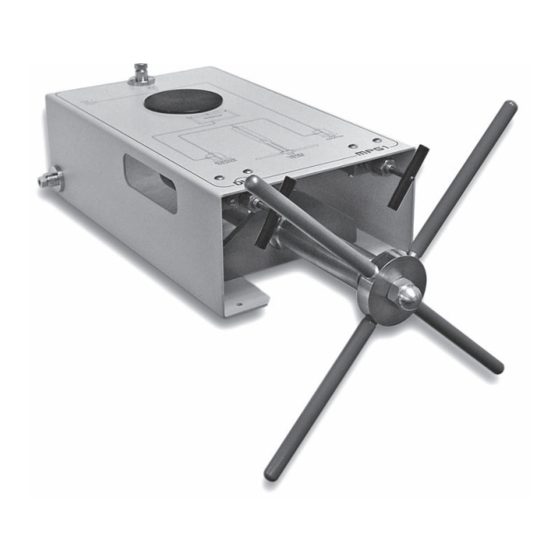DH Instruments MPG1 Manuale di funzionamento e manutenzione - Pagina 15
Sfoglia online o scarica il pdf Manuale di funzionamento e manutenzione per Controllore DH Instruments MPG1. DH Instruments MPG1 20. Manual pressure generator/controller for hydraulic pressure
Anche per DH Instruments MPG1: Foglio di istruzioni (2 pagine)

Open the RESERVOIR ISOLATION valve, close the TEST ISOLATION valve and back
the variable volume all the way out (CCW). This fills the variable volume with fluid and
makes the full stroke available to generate pressure.
Close the RESERVOIR ISOLATION valve, open the TEST ISOLATION valve. Use the
variable volume to increase, decrease and adjust pressure as desired. Note that the
TEST ISOLATION needle valve can be used as a mini variable volume for micro
pressure adjustment if desired. However, closing the TEST ISOLATION valve complete
isolates the test circuit from the main variable volume and the RESERVOIR ISOLATION
valve.
If the variable volume runs out of stroke when increasing or decreasing pressure, it can
be refilled without releasing pressure from the test system. See Section 3.2.3 for
instructions.
To release pressure from the test system and return pressure to atmosphere, use the
variable volume to reduce pressure as desired. For a rapid release to atmosphere and
full vent, open the RESERVOIR ISOLATION VALVE. Note that pressure will drop very
quickly when the RESERVOIR ISOLATION valve is opened. For a gentle pressure
decrease, always use the variable volume.
3.2.3
REFILLING OR EMPTYING THE VARIABLE VOLUME
WITHOUT RELEASING TEST PRESSURE
When working high pressure ranges with large test volumes or test volumes that are not fully
purged of air, the volume displaced by a single stroke of the variable volume may not be
sufficient to generate the maximum pressure desired. Conversely, when lowering pressure
the variable volume may run out of stroke before it is desirable to use the RESERVOIR
ISOLATION valve to release pressure rapidly. In these cases, the variable volume can be
backed off and refilled without releasing the pressure in the test system.
To refill or empty the variable volume without releasing test pressure, proceed as follows:
Close the TEST ISOLATION valve. This isolates the test system connected to the TEST
ports from the variable volume and the RESERVOIR ISOLATION valve. Note that after
refilling the variable volume, the TEST ISOLATION valve will be opened again. At that
time, the pressure on both sides of the valve will not be perfectly equal so the pressure in
the system connected to the TEST port(s) will change. Consider this possibility before
closing the TEST ISOLATION valve. For example, if using a piston gauge, put the piston
gauge piston at its bottom stop before closing the TEST ISOLATION valve.
Open the RESERVOIR ISOLATION valve.
volume and connects it to the reservoir.
Back out the variable volume (CCW) to fill it or screw it in (CW) to empty it, as desired.
Close the RESERVOIR ISOLATION VALVE. DO NOT OPEN THE TEST ISOLATION
VALVE YET.
Operate the variable volume as needed to generate a pressure equal to the pressure in
the system connected to the TEST port(s). This is the pressure that was present on the
variable volume before the TEST ISOLATION VALVE was closed in
may be reasonably approximated by the feel (torque) on the variable volume.
Slowly open the TEST ISOLATION valve to equalize the pressure. Proceed to generate
and adjust pressure as desired (see Section 3.2.2).
This vents the pressure in the variable
Page 9
© 2004-2007 DH Instruments, a Fluke Company
3. OPERATION
. The pressure
